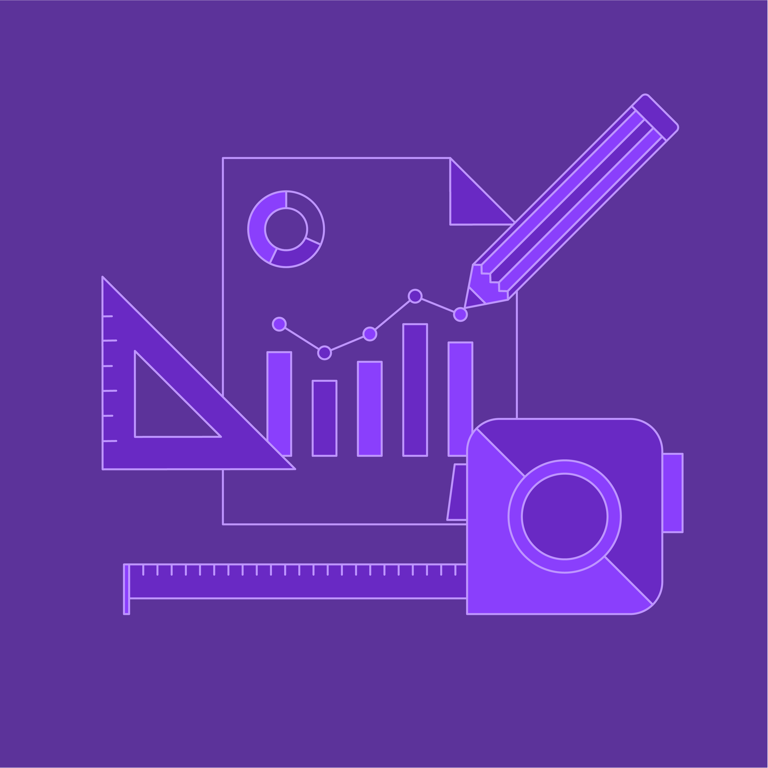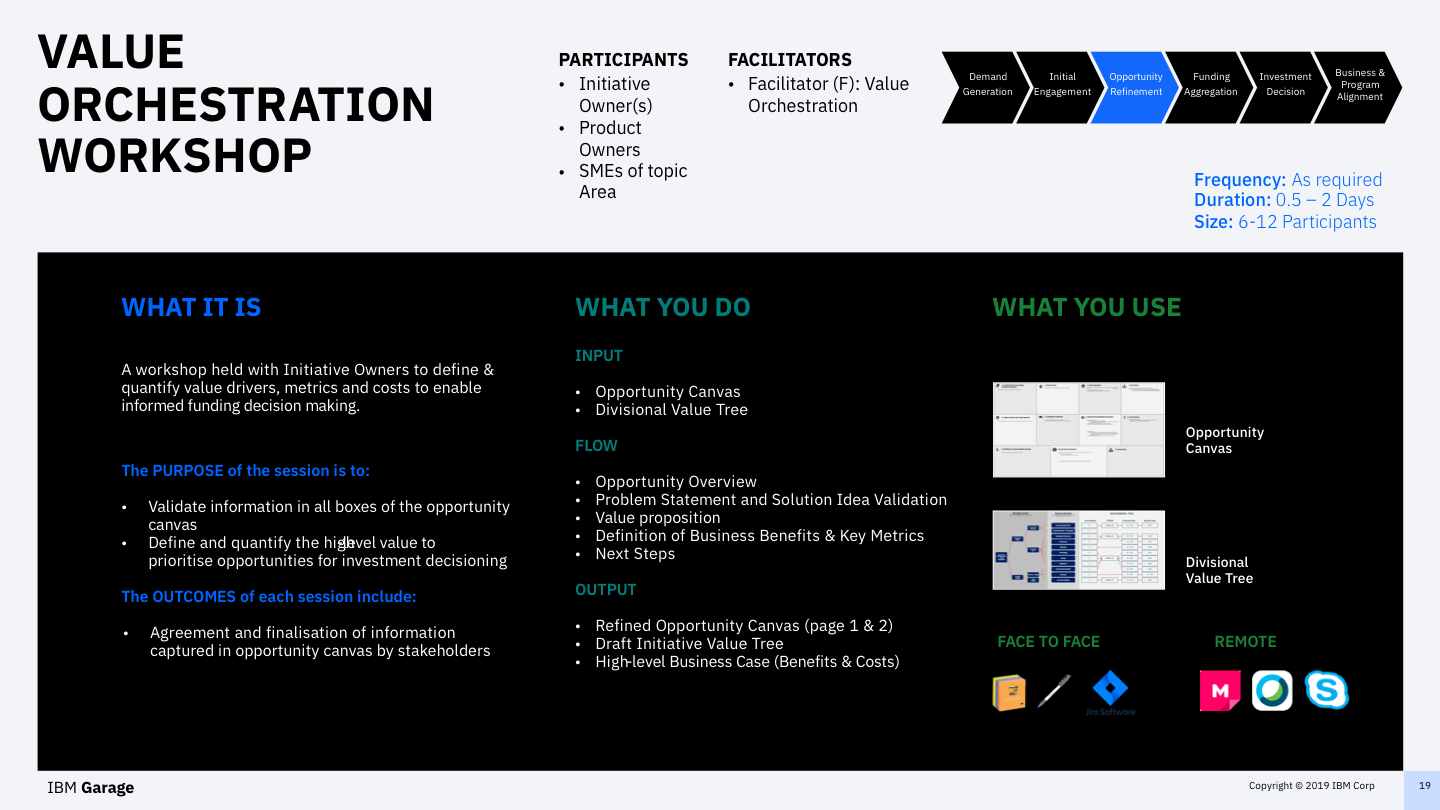Section 3: Measuring ValueMeasurement
So far, this site has introduced you to the importance of defining and measuring value in an IBM Garage.
It’s talked about how to start having conversations around value with your clients, about how to relate your Garage’s efforts back to business impact through value trees, and about how to communicate your Garage’s successes in ways that resonate with stakeholders.
This section lays out how to actually measure and calculate the business impact you’re providing; its where the rubber meets the road in terms of showing value for your IBM Garage.
How do I
measure value?
As we talked about in Section 2: Chapter 2: Identifying and defining value, value trees are a great way to understand what the key value drivers for your IBM Garage opportunities are, and what things (i.e., time saved, customer satisfaction, etc) you can use to measure your impact. Getting to the level where you only know what you want to measure isn’t enough, though. You have to decide exactly how you’re going to measure it to show true impact.

As you’ll see below, they don’t have to be complicated, and they don’t have to be complex; they just have to give you relevant information to understand how well things are going.

Garages take different approaches when refining KPIs for value trees. The Woodside Garage takes a structured approach, running workshops with product owners to carefully define what should be measured and how. Every opportunity that they take on requires an in-depth value tree with specific, measurable KPIs attached.
Other Garages have to
be more scrappy
The Frito-Lay Garage has had success with developing prototype value trees and KPIs within their squads, and then engaging with their clients to refine them
Your ability to measure your impact will also depend on your Garage’s access to business data from your client. If you need to measure the productivity of sales representatives, for example, and your client either doesn’t have data around that specific metric or isn’t willing to provide it to you, then you’re ability to prioritize between different projects and show value will be severely curtailed.
If an opportunity you’re considering doesn’t have any data available to measure with, then consider finding a way to gather your own data or working on something different. Remember, IBM Garage is focused on speed to value, and you can’t show value if you can’t measure outcomes.